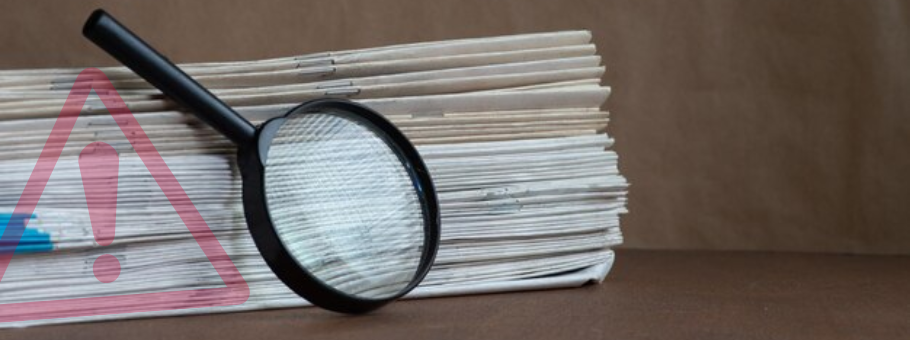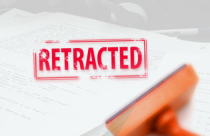Research Fraud: How Journals Should Address It

Journals and academic institutions have significant roles to play in cases where academic fraud and research misconduct are suspected. When journals suspect academic misconduct from researchers, they should alert the corresponding institutions. Journals should not investigate such cases; institutions should. The NIH defines research misconduct as “fabrication, falsification, or plagiarism in proposing, performing, or reviewing research, or in reporting research results.” While the definition of research misconduct is straightforward, the rate at which it occurs is not as easy to pinpoint.
A study has shown that 1.9% of scientists admitted to falsifying data, while up to 33.7% admitted to using questionable research practices. In terms of admission rates by colleagues, 14.2% admitted to falsification, while 72% admitted to using questionable research practices. There are many types of scientific misconduct, and the scientific community itself becomes less credible with each instance. Academic fraud is committed when researchers purposefully copy others’ work, are dishonest about their work, fail to attribute or behave inappropriately in relation to the suspected misconduct. It may be hard to agree upon how research misconduct should be dealt with. Therefore, the Committee on Publication and Ethics (COPE) has created certain common guidelines for journals and institutions.
Journals and Research Misconduct
In instances of research misconduct, journals and institutions must work together in identifying the root cause of misconduct. The COPE flowchart suggests ways by which journal editors should handle misconduct. Former COPE Chairperson, Dr. Elizabeth Wager, has proposed the following guidelines based on the COPE flowchart:
- Journal editors should assess the situation by gathering readily available information. In addition, editors should avoid any actions that can jeopardize the investigation.
- Journal editors should give researchers a chance to explain. In doing so, journal editors should use neutral language and avoid accusations.
- Journal editors should seek an official investigation. If the researchers do not give satisfactory responses, journal editors should contact the institution involved.
- It is the job of journal editors to protect readers from misleading work. Accordingly, journals can issue a retraction or publish a correction/expression of concern.
- Journals should also formulate clear policies and processes for handling suspected misconduct.
- Lastly, journals should create general awareness among authors and reviewers and educate them on the likely consequences of research fraud.
Being Aware of Research Misconduct
Journal editors become aware of possible misconduct through a number of sources- peer reviewers, the authors’ colleagues, etc. There have been a few instances when research misconduct was detected and acted upon by journals. For instance, Patrice Dunoyer, along with a plant biology group headed by Olivier Voinnet, had eight papers retracted from Science, Plant Cell, The EMBO Journal, and several others. Investigations by the French National Centre for Scientific Research (CNRS) and the Swiss Federal Institute of Technology (ETH) uncovered multiple instances of image manipulation in the year 2015. Because of this, EMBO banned and suspended Voinnet and also had his award revoked. In addition, Dunoyer was temporarily suspended from the CNRS.
To uncover academic fraud, journal editors use a number of strategies. For instance, academic institutions and journals regularly use iThenticate; a tool for detecting plagiarism. The following is a partial list of other strategies used for detecting research misconduct:
- One particular section of the manuscript seems much more polished than the rest.
- Figures from previously published work get reused (generally, reused images are rotated by 90 degrees, digitally modified using image analysis programs, or cropped differently).
- Young academic staff members are included as researchers in the manuscript, even if their contribution is minimal.
- Sophisticated statistical techniques can be used to detect fabricated numerical data. This is possible because numbers generated through natural processes follow a distribution that confirms to Benford’s law. Deviations should, therefore, raise red flags.
The COPE Guidelines
A group of medical journal editors founded COPE in 1997, aiming to create a forum to discuss publication misconduct. The COPE created a set of guidelines because there was a lack of protocol for addressing research misconduct. The guidelines developed by COPE focus on how institutions and journals should respond to research misconduct.
The COPE guidelines for research are divided into nine sections: study design and ethical approval, data analysis, authorship, conflicts of interest, peer review, conflicts of interest, redundant publication, plagiarism, duties of editors, and media relations. COPE also provided guidelines for dealing with research misconduct. These guidelines are meant to guide researchers and editors in avoiding research misconduct and dealing with possible cases of academic fraud.
Although these guidelines exist, policies should still be instituted by journals and institutions regarding research misconduct. However, a study found that only 54.8% of journals have policies in place to deal with fraud. It is essential for all journals and institutions to devise policies on research misconduct. The scientific community loses credibility whenever ethical misconduct occurs. Furthermore, publishing articles that contain falsified information also prove detrimental to the advancement of knowledge. In summary, research misconduct should be identified diligently and dealt with strictly.
Should law enforcement arrest researchers for committing fraud and wasting taxpayers’ money? Should they be fined heavily and barred from getting subsequent research funding? Please share your opinion by commenting in the section below.











Penalizing fraud…